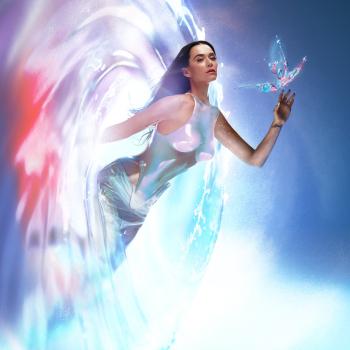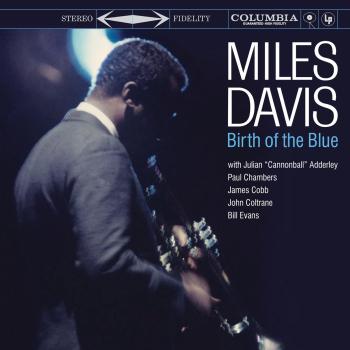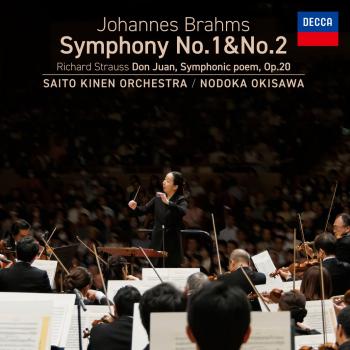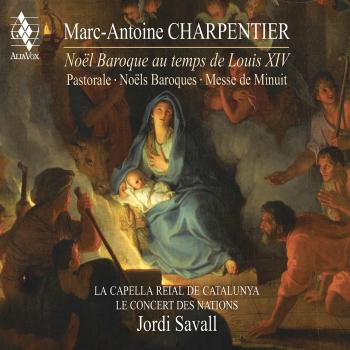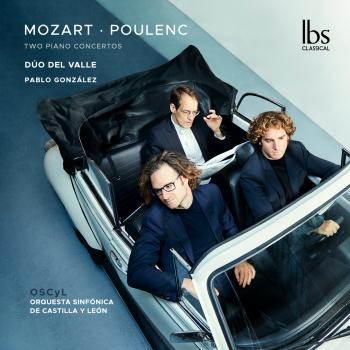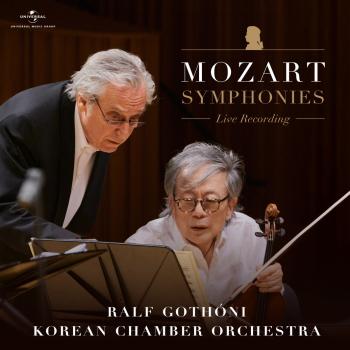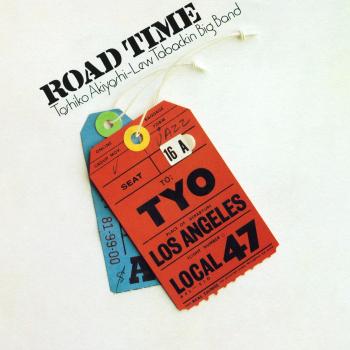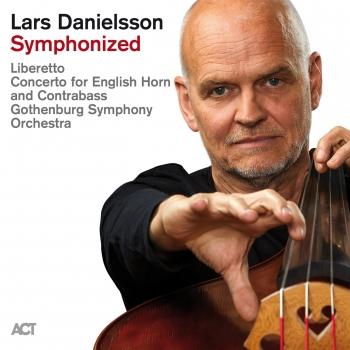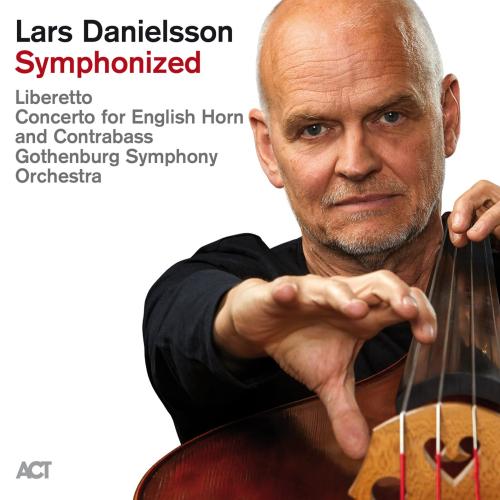
Lars Danielsson Symphonized Lars Danielsson & Gothenburg Symphony Orchestra
Album info
Album-Release:
2023
HRA-Release:
31.03.2023
Label: ACT Music
Genre: Classical
Subgenre: Classical Crossover
Artist: Lars Danielsson & Gothenburg Symphony Orchestra
Composer: Lars Danielsson
Album including Album cover Booklet (PDF)
- Lars Danielsson (b. 1958): Liberetto:
- 1 Danielsson: Liberetto 05:01
- Passacaglia:
- 2 Danielsson: Passacaglia 05:39
- Africa:
- 3 Danielsson: Africa 06:59
- Sacred Mind:
- 4 Danielsson: Sacred Mind 05:19
- Lviv:
- 5 Danielsson: Lviv 04:47
- Nikita's Dream:
- 6 Danielsson: Nikita's Dream 05:41
- The Fifth Grade:
- 7 Danielsson: The Fifth Grade 08:20
- Yes to You:
- 8 Danielsson: Yes to You 04:03
- I. Affettuoso:
- 9 Danielsson: I. Affettuoso 07:23
- II. Elegi:
- 10 Danielsson: II. Elegi 07:50
- Intermedium:
- 11 Danielsson: Intermedium 02:08
- III. Le Bagatelle:
- 12 Danielsson: III. Le Bagatelle 13:37
- IV. Scherzo:
- 13 Danielsson: IV. Scherzo 07:54
Info for Lars Danielsson Symphonized
Der Schwede Lars Danielsson ist ein Meister der improvisatorischen Finesse auf Kontrabass und Cello. Auf seinen Klangreisen folgt man ihm gern und staunend, die herrlichen Klangbilder beruhen meist auf songnahen Themen. Als Musiker ist er viel zu gut, um sein beeindruckendes Virtuosentum vordergründig auszustellen. Danielssons ausgefeilt lyrisch sanglichen Improvisationslinien bleiben im Dienst der jeweiligen Sache, auch wenn er als Solist nach vorn tritt. Da- rum arbeitet er auch als Arrangeur, Komponist und Bandleader. Mit dem Wortspiel „Liberetto“ hat er nicht nur einen ein- prägsamen Namen für die ideale Band zur Umsetzung seiner Intentionen gefunden, sondern auch eine Formel für seine Herangehensweise: Der darin enthaltene Bestandteil „Libretto“ steht für das Komponierte, Quasiklassische seiner Stücke, während das lateinische „Liber“ auf die Freiheiten während der Interpretationen verweist, auf das Prinzip Jazz also.
Beide Pole, Klassik und Jazz, bestimmen Danielssons Karriere als Musiker: „Die Frage, ob ich ein Jazzmusiker bin, würden die Musiker des Orchesters mit Ja beantworten, würde ich aber Wynton Marsalis fragen, käme wahrscheinlich ein Nein“, sagt er und schmunzelt dabei, denn er fühlt sich wohl zwischen den Stilen. Sein erster Musiklehrer war Orgelspieler in der Kirche. Zudem war die heimische Folklore allpräsent. Dann hat er als Cellist häufig in Orchestern gespielt. Zu dieser musikalischen Sozialisation mit Bach und sakralen Hymnen kam bald die Liebe zum Rock ‘n‘ Roll. Die verflüchtigte sich Mitte der Siebziger mit dem Aufkommen des New Wave aber wieder, und der Teenager begann, Jazz zu hören. Immer schon ging es Lars Danielsson darum, aus diesem Einflussgemisch heraus einen eigenen Platz als europäischer Musiker zu definieren. Zwar hat er anfangs auch Jazzstandards gespielt, doch blieb er auf der Suche: „In meine Musik ist viel Erfahrung eingeflossen.“
Mit seinem Doppelalbum „Symphonized“ erfüllt sich Lars Danielsson nun einen Traum. Mit einigen Musikern aus dem Gothenburg Symphony Orchestra ist er schon aufs Konservatorium gegangen. 2008 nahm er das erste Mal mit diesem Orchester Eigenes auf. Dann durfte sich der Englischhornspieler Björn Bohlin einen Komponisten aussuchen und beauftragte Danielsson. 2018 spielten sie das „Concerto for English Horn and Contrabass“ erstmals live, 2019 fand dann das Recording statt, diesmal mit Carolina Grinne als Solistin an Englischhorn und Oboe.
Zwei Jahre später ergab sich die Möglichkeit, am selben Ort auch Extramaterial aufzunehmen. Es entstand die Idee eines etwas anderen „Best of“ mit Stücken der Liberetto-Band in orchestraler Form. Ein volles Orchester mit 79 Mitgliedern, Gastsolisten und bei beiden Aufnahmen Peter Nordahl am Pult. Der ist bekannt für Crossover-Projekte und die Verbindung von Klassik mit Populärem.
Eine solche Verbindung ist ein vermintes Feld. Lars Danielsson ist sich dessen bewusst. Seine „Symphonized“- Aufnahmen sind genau deswegen so überzeugend. Er schreibt für die Orchestermusiker in der für sie gewohnten Weise und versucht nicht, ihnen Jazz abzuverlangen. „Ich hoffe ihre Instrumente gut genug zu kennen, um für sie so schreiben zu können, dass es bestmöglich klingt.“ Eine cineastische Breitwandmusik entstand, und man darf durchaus an Claus Ogermann, Nino Rota oder Ennio Morricone denken. Von dort ist es nicht weit zu Maurice Ravel, zu dem sein Kollege Claude Debussy einmal sagte: „Vergnügen ist das Gesetz.“
Dieses Vergnügen ist auf den Aufnahmen wie mit Händen zu greifen. Elastisch, farbenreich ausbalanciert und in melodischer Vielfalt laufen die kurzweiligen Ereignisse ab. Eine Herausforderung sieht Lars Danielsson darin, dass Orchester so einzusetzen, dass organischer Raum für Soloinstrumente bleibt. Melodie, Flow und Emotion sind zentrale Elemente seiner Kunst. „Meine Musik soll so schön wie möglich klingen“, sagt er, „es muss aber auch für die Ausführenden interessant sein, sie zu spielen. Sie sollen Spaß haben mit meinen Kompositionen. Melodien zu schreiben und sie dann von den Musikern eines Orchesters interpretiert zu hören, ist die totale Magie. Bei ‘Sacred Mind‘ zum Beispiel spiele ich nicht mit. Ich saß im Saal und freute mich am umwerfenden Sound des Orchesters.“
Im Jahr 2004 begann die so erfolgreiche Zusammenarbeit von Lars Danielsson mit dem ACT-Label. Schon auf dem Album „Libera Me“ trat zu einer mit Jon Christensen, Nils Petter Molvær, Jan Bang, Caecilie Norby und anderen illuster besetzten Band das Danish Radio Concert Orchestra. Schon da gab es diesen leichten und fließenden Sound, diese Einladung, gemeinsam mit exzellenten Musikern eine gute Zeit zu verbringen. Nun ist es, als schließe sich vorübergehend ein Kreis. Doch die Geschichte wird weitergehen ...
Lars Danielsson, Kontrabass, Cello
Grégory Privat, Klavier
Magnus Öström, Schlagzeug und Percussion
John Parricelli, Gitarre
Göteborger Symphonieorchester
Peter Nordahl, Dirigent
Carolina Grinne, Englischhorn, Oboe d ́amore
Gäste:
Arve Henriksen, Trompete (Nikita's Dream und Yes to You)
Paolo Fresu, Trompete (Afrika und Scherzo)
Lars Danielsson
The late great Danish bass legend Nils-Henning Ǿrsted Pedersen didn’t only leave the world a direct legacy of great jazz through his own playing; a part of what he has bequeathed is indirect. When the young Swedish musician Lars Danielsson once heard him in concert, he was so deeply affected, he turned towards jazz, and to the bass. Until that point, Danielsson, born in Gothenburg in 1958, had been studying classical cello at the conservatory in his home town of Gothenburg. Fortunately, that study of the cello is not something he has chosen to shrug off, he has integrated it into what he does now. Not just in the sense that he always includes the cello in his repertoire, but also that his bass-playing unmistakably has a slightly more melodious, floating and lyrical ring to it than that of many of his fellow bass players.
These were the special qualities which soon placed him in very high demand internationally as a sideman. As early as the 1980s, he had worked not only with local and European greats such as Lars Jansson, Hans Ulrik, Carsten Dahl, Nils Landgren, Christopher Dell, Johannes Enders and Trilok Gurtu (in whose group he remained a member for some time), but also with luminaries of the American scene such as saxophonists Rick Margitza and Charles Lloyd, the Brecker Brothers, drummers Terri Lyne Carrington , Jack DeJohnette and Billy Hart or guitarists John Scofield, Mike Stern and John Abercrombie. But Danielsson has never been content with just an accompanying role. He has always been a creative composer as well and is one of a relatively small group of bassists who has also emerged as a significant bandleader.
The ensemble which gave Danielsson the best outlet in his quest for musical self-expression for almost 20 years was his own all-star quartet with American saxophonist David Liebman (who used to play with Miles Davis), Swedish pianist Bobo Stenson and Norwegian drummer Jon Christensen. Stenson and Christensen are both pioneers of the ”Nordic Sound”, the combination of jazz with the Scandinavian ethos, and both are also long-standing artists on the ECM label. Four albums by the quartet under Danielsson‘s name and six more albums with guests consolidated Danielsson’s reputation as one of Europe’s leading jazz musicians, receiving not just enthusiastic reviews but also many awards. Furthermore, this band laid the foundation for his work as a composer, arranger and producer, which has developed in a major way since then. Danielsson has worked in these capacities with the Danish Radio Concert Orchestra, the Gothenburg Symphony Orchestra, the NDR Big Band, the St. Petersburg Symphony Orchestra and the JazzBaltica Ensemble, the drummer Jonas Johanssen and the singers Viktoria Tolstoy and Cæcilie Norby – the latter being his wife, whom he regularly accompanies.
In the past few years, Lars Danielsson has also expanded his musical frame of reference and stylistic range of his own projects. His ACT debut, ”Libera Me” from 2004, proved him to be a master of orchestral jazz. ”Mélange Bleu”, two years later, sprung a surprise with a modern, carefully applied electronic framework for his expansive and sonically adventurous and rich compositions. With ”Pasodoble” in 2007, he created a breathtaking manifesto of beautiful sound in a duet with the Polish pianist Leszek Możdżer, which occupied the terrain between classical music and jazz, and received superb reviews. ”Tarantella” continued the productive collaboration with Możdżer in 2009, but transferred the basic musical idea into the context of a chamber jazz ensemble. All these albums (as well as those that followed) went either gold or platinum, and the orchestral project ”Blauklang”, co-initiated by him and conducted by Vince Mendoza, was nominated for a Grammy.
To some extent, Danielsson really found the quintessence of his diverse forms of expression in 2012 – and also the right name for it: ”Liberetto”. His newly-created word ”describes a certain mood in which I want to develop my music,“ he says. ”It follows on from my earlier albums – purely linguistically as in the reference to classical music.” The album, itself entitled ”Liberetto” with the Armenian star pianist Tigran, e.s.t. drummer Magnus Öström, British guitarist John Parricelli and trumpeter Arve Henriksen found a new balance between jazz, classical music, pop and European folk music and thus opened up a new dimension of how compositional processes and dramaturgy could be used in jazz. It was so successful that the project continues to this day: After ”Liberetto II” in a very intimate duo with Tigran and ”Liberetto III” in the tried and tested quartet, with the addition of a new and different hue in the form of French-Caribbean pianist, Grégory Privat, Danielsson performed a symphonic version of this concept and the compositions for it at the Leopolis Jazz Fest. There will also be a recording of this project in the near future.
Naturally, Danielsson also leaves plenty of room for other interesting projects: he participates in the unique concert series ”Jazz at Berlin Philharmonic”, and he works in a duo with the Sardinian trumpeter Paolo Fresu, one of the most lyrical players anywhere. Their joint album ”Summerwind” is the latest proof of what makes Danielsson quite so special: technical brilliance, a vivid and consistently fertile musical imagination, and an almost telepathic understanding with other musicians.
Booklet for Lars Danielsson Symphonized

